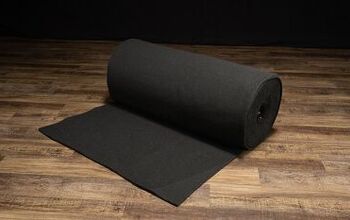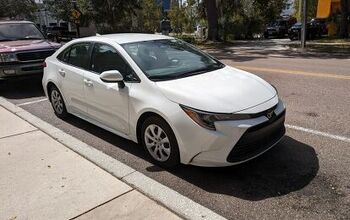Red Light Camera Giant Redflex Loses $8 Million From Opposition
The number one speed camera and red light camera operator in the US today reported that its profits plunged by 32 percent in the first half of fiscal 2010, due in large measure to rising public discontent with automated enforcement. Redflex Traffic Systems told Australian shareholders that after adjusting for exchange rates, the company lost A$8 million, primarily as a result of citizen activists taking action against photo enforcement.
“The business, particularly in the US, has become more difficult over recent years, and the results reflect the influence of a range of adverse issues and circumstances on the business, including… the rise of opposition from various groups opposed to photo enforcement, resulting in challenges to programs through citizen initiated referenda,” a company statement explained. “A state wide ballot initiative [in Arizona] could result in negative impact.”
To date, citizen groups nationwide have succeeded in putting the question of photo enforcement on the ballot in nine cities. All nine voted to ban automated ticketing, with margins as high as 86 percent against the cameras ( view list of cities). The largest citizen-led revolt so far is happening in the state of Arizona where the group CameraFraud.com has used a continual stream of protests, a Facebook page and other techniques to educate drivers that citations mailed from the program could be thrown away, unpaid. Only personally served notices are valid in the state. Redflex reported that the Arizona program so far has lost $4.9 million.
“Citation payment rates remain low due to the inability to achieve acceptable payment rates from violators,” the company explained. “Our push to reform the laws governing traffic enforcement with the Arizona Legislature and with the Arizona Supreme Court makes 2010 a critical year for our Company in Arizona…. Once corrective legislation is passed payment rates are expected to rise to the average historical payments rates typical for the Arizona business model.”
Discontent with photo ticketing has spread nationwide as politicians fear they may lose their jobs if they are responsible for bringing cameras into their community, although Redflex suggests the recession may also play a role.
“The rate of new contract signings has clearly decreased since a year ago,” Redflex admitted. “It is not clear at this stage whether this is driven by the economic environment, by the level of opposition, or by a slowdown in the rate of growth in the industry as a whole.”
A number of cities that use Redflex or a competitor have dropped the use of automated ticketing machines entirely in California over the past few years, including Compton, El Monte, Fairfield, Maywood, Moreno Valley, Redlands, Roseville, San Jose photo radar and Upland. Loma Linda is waiting to drop Redflex. Other states are following California’s lead as Avondale, Arizona; Schaumburg, Illinois as well as Brunswick and Dalton, Georgia also canceled their programs.
“As has been experienced over prior years, there is no guarantee that all contracts will be renewed at completion of their base contract term,” a Redflex statement explained. “Some cities have decided not to continue, and we have experienced early shutdowns in two cities.”
The company’s other major financial burden has been a lawsuit filed by American Traffic Solutions has cost Redflex another $1.3 million ( more info). A shareholder revolt also cost the company $197,000 in expenses related to a change in the board of directors.
[Courtesy: TheNewspaper.com]
More by The Newspaper
Latest Car Reviews
Read moreLatest Product Reviews
Read moreRecent Comments
- GrumpyOldMan The "Junior" name was good enough for the German DKW in 1959-1963:https://en.wikipedia.org/wiki/DKW_Junior
- Philip I love seeing these stories regarding concepts that I have vague memories of from collector magazines, books, etc (usually by the esteemed Richard Langworth who I credit for most of my car history knowledge!!!). On a tangent here, I remember reading Lee Iacocca's autobiography in the late 1980s, and being impressed, though on a second reading, my older and self realized why Henry Ford II must have found him irritating. He took credit for and boasted about everything successful being his alone, and sidestepped anything that was unsuccessful. Although a very interesting about some of the history of the US car industry from the 1950s through the 1980s, one needs to remind oneself of the subjective recounting in this book. Iacocca mentioned Henry II's motto "Never complain; never explain" which is basically the M.O. of the Royal Family, so few heard his side of the story. I first began to question Iacocca's rationale when he calls himself "The Father of the Mustang". He even said how so many people have taken credit for the Mustang that he would hate to be seen in public with the mother. To me, much of the Mustang's success needs to be credited to the DESIGNER Joe Oros. If the car did not have that iconic appearance, it wouldn't have become an icon. Of course accounting (making it affordable), marketing (identifying and understanding the car's market) and engineering (building a car from a Falcon base to meet the cost and marketing goals) were also instrumental, as well as Iacocca's leadership....but truth be told, I don't give him much credit at all. If he did it all, it would have looked as dowdy as a 1980s K-car. He simply did not grasp car style and design like a Bill Mitchell or John Delorean at GM. Hell, in the same book he claims credit for the Brougham era four-door Thunderbird with landau bars (ugh) and putting a "Rolls-Royce grille" on the Continental Mark III. Interesting ideas, but made the cars look chintzy, old-fashioned and pretentious. Dean Martin found them cool as "Matt Helm" in the late 1960s, but he was already well into middle age by then. It's hard not to laugh at these cartoon vehicles.
- Dwford The real crime is not bringing this EV to the US (along with the Jeep Avenger EV)
- Kwik_Shift_Pro4X Another Hyunkia'sis? 🙈
- SCE to AUX "Hyundai told us that perhaps he or she is a performance enthusiast who is EV hesitant."I'm not so sure. If you're 'EV hesitant', you're not going to jump into a $66k performance car for your first EV experience, especially with its compromised range. Unless this car is purchased as a weekend toy, which perhaps Hyundai is describing.Quite the opposite, I think this car is for a 2nd-time EV buyer (like me*) who understands what they're getting into. Even the Model 3 Performance is a less overt track star.*But since I have no interest in owning a performance car, this one wouldn't be for me. A heavily-discounted standard Ioniq 5 (or 6) would be fine.Tim - When you say the car is longer and wider, is that achieved with cladding changes, or metal (like the Raptor)?

































Comments
Join the conversation
It's quite interesting to see how motivated people become in opposing photo enforcement. This sort of combination surveillance / revenue generation has really struck a raw nerve with the driving public. I'm happy to see citizens standing up for their rights against such unfair governmental tactics. One can only hope this is a trend which will continue to expand into other areas of opposing coercive government. Anyone ready to stop paying their government rent (property taxes) yet? Or how about informing the politicians that you are no longer participating in The War On _________ (fill in blank).
good i will be delirious if this company goes bankrupt and all the 'moms and dads' who invested lose their shirts parasites